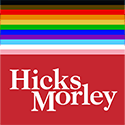Keynote Speaker on Accessibility for Ontarians with Disabilities
Luke Anderson, Founder, StopGap Foundation
Organizations Supporting People with Disabilities
- The Canadian Council on Rehabilitation and Work is an organization offering valuable resources to promote and support meaningful and equitable employment of people with disabilities. Their mission: “As innovators and agents of change, we build partnerships, develop skills, share knowledge and influence attitudes.”
- Lime Connect is a global not-for-profit organization that is rebranding disability through achievement and breaking stereotypes. The organization attracts, prepares, and connects high potential university students and professionals – including veterans – who happen to have all types of disabilities, with scholarships, internships, The Lime Connect Fellowship Program, and full time careers with corporate partners.
- The Forward Movement is a campaign that advocates for an update to the current wheelchair access symbol.
- Magnet is a collaborative hub of post-secondary institutions, not-for-profits, government, labour, and industry partners working together on one common platform, towards one common goal: to address the unemployment and under-employment of Canadians, particularly of youth, newcomers to Canada, Indigenous peoples, persons with disabilities and other individuals facing barriers to employment.
- Specialisterne Canada helps businesses and employers understand, value and integrate the unique perspective and capabilities of people on the autism spectrum, advancing inclusive hiring practices. The organization has received publicity for its demonstration of recruiting people with autism to fill the roles of skilled workers at Canadian companies.
Language and Terminology
Language is a powerful tool and can be used to help remove barriers for people with disabilities. The use of “people-first” language encourages the individual to be recognized ahead of the disability. The Canadian Association of Broadcasters assembled “Some General Guidelines on Using Language and Terminology” when referring persons with disabilities. Initially intended as a guide for the media industry, it is a great resource in being conscious of using empowering language.
For example, the term “persons with disabilities” is recommended over the antiquated terms “disabled” or “handicapped.” Similarly, the phrase, “a person with hearing loss” is preferable to “a deaf person.”
Examples of Companies with Inclusive Hiring Practices and Accessibility Products
- American drugstore chain, Walgreens, is demonstrating how inclusive hiring practices not only helps the employees, but also the brand, and potentially even the industry. Walgreens shares information on their inclusivity program within their retail stores and distribution centres on their website and YouTube channel.
- Tim Hortons’ franchisee, Mark Wafer, began hiring people with disabilities at his Tim Horton’s location and became an advocate for more inclusive employment in Canada.
- Designing products and services for people with disabilities often results in universally appreciated solutions. Electric toothbrushes, curb cuts, flat panel light switches, and the Internet can be attributed innovation initiated to promote accessibility for people with disabilities.
StopGap: Facebook | Twitter | Instagram | LinkedIn | Youtube
